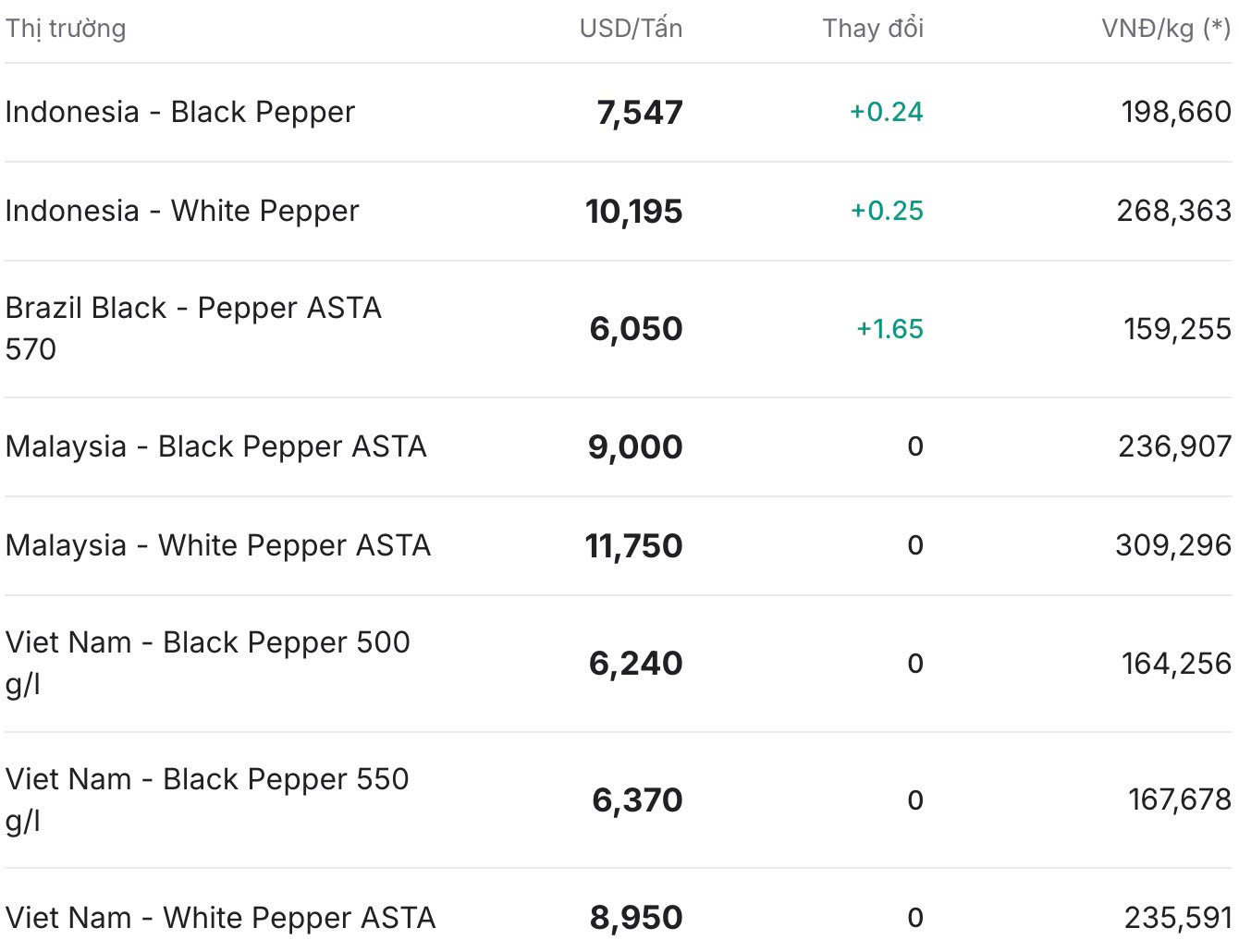Domestic pepper prices: The chain of price increases continues
As of 11:30 today (September 2), the domestic pepper market continued to increase in price, increasing by an average of 4,400 VND/kg. Currently, pepper purchasing prices are recorded at 140,000 - 147,000 VND/kg.
Increasing by 2,000 VND/kg, Gia Lai province is still the area with the lowest pepper purchasing price in the country, reaching 140,000 VND/kg.
Dong Nai and Ho Chi Minh City both increased prices to VND145,000/kg, a sharp increase of VND5,000/kg.
Notably, for Dak Lak and Lam Dong province, compared to the same time last week, pepper prices in these two regions have increased by VND20,000/kg, bringing the price to VND147,000/kg.
World pepper prices: Indonesia, Brazil increase widely
In the world market, pepper prices increased in 2 regions. The Indonesian exchange - one of the most vibrant markets - increased by 0.24% and 0.25% respectively. Currently, these two items are traded between 7,547 - 10,195 USD/ton (equivalent to 198.660 VND/kg - 268,363 VND/kg).
In Vietnam, the export price of black pepper of 500 g/l and 550 g/l is stable after a strong increase, currently anchored at 6,240 - 6,370 USD/ton. ASTA white pepper prices reached 8,950 USD/ton (equivalent to 235,591 VND/kg).
In the same direction, the Brazilian exchange increased by 1.65%, this region is currently at 6,050 USD/ton (about 159,255 VND/kg). Meanwhile, Malaysia's black and white pepper remained at 11,750 USD/ton and 9,000 USD/ton.

Assessment and forecast
According to the Import-Export Department (Ministry of Industry and Trade), pepper prices have shown signs of a slight recovery since the end of June in the context that farmers and speculators are still holding goods and are not rushing to sell with the expectation that prices will recover better in the third and fourth quarters of this year.
This hoarding is due to the prediction that prices will increase sharply in the coming time, contributing to reducing immediate supply in the market.
In the world market, the rising USD and armed conflicts in many regions are escalating, making many investors more cautious. Along with that, the increased logistics costs also contribute to creating short-term pressure on pepper prices.











